Abstract
A total of 529 well and distribution potable water samples were analyzed for total coliforms by the most-probable-number and membrane filter (MF) techniques. Standard plate count bacteria and MF noncoliform bacteria were also enumerated. Frequency of coliform detection, turbidity in most-probable-number tubes, and extensive overgrowth by noncoliforms on MF filters were directly proportional to standard plate counts. Recovery of coliforms was greatest by the MF method at low (less than 100 CFU/ml) standard plate count densities and better by the most-probable-number method (confirming gas and turbid tube) at high (greater than 500 CFU/ml) standard plate count densities. In the latter case, overgrowth by noncoliforms on MF filters suppressed sheen development and, in turn, masked coliform detection. Of 341 atypical (no sheen) MF colonies verified by parallel inoculation of lauryl sulfate broth and billiant green-bile broth, 156 were aerogenic in the latter medium. Of atypical isolates, 84% were identified as either Citrobacter or Enterobacter species. A 4.3-fold reduction in numbers of overgrown MF filters and an 2.2-fold increase in numbers of coliforms recovered from 127 water samples was accomplished by anaerobic incubation of MF cultures. This anaerobic modification of the standard MF technique significantly reduced overgrowth and enhanced recovery of coliforms from potable groundwater. This technique is simple, cost effective, and suitable for monitoring of untreated ground water common to some small water systems and private water supplies.
Full text
PDF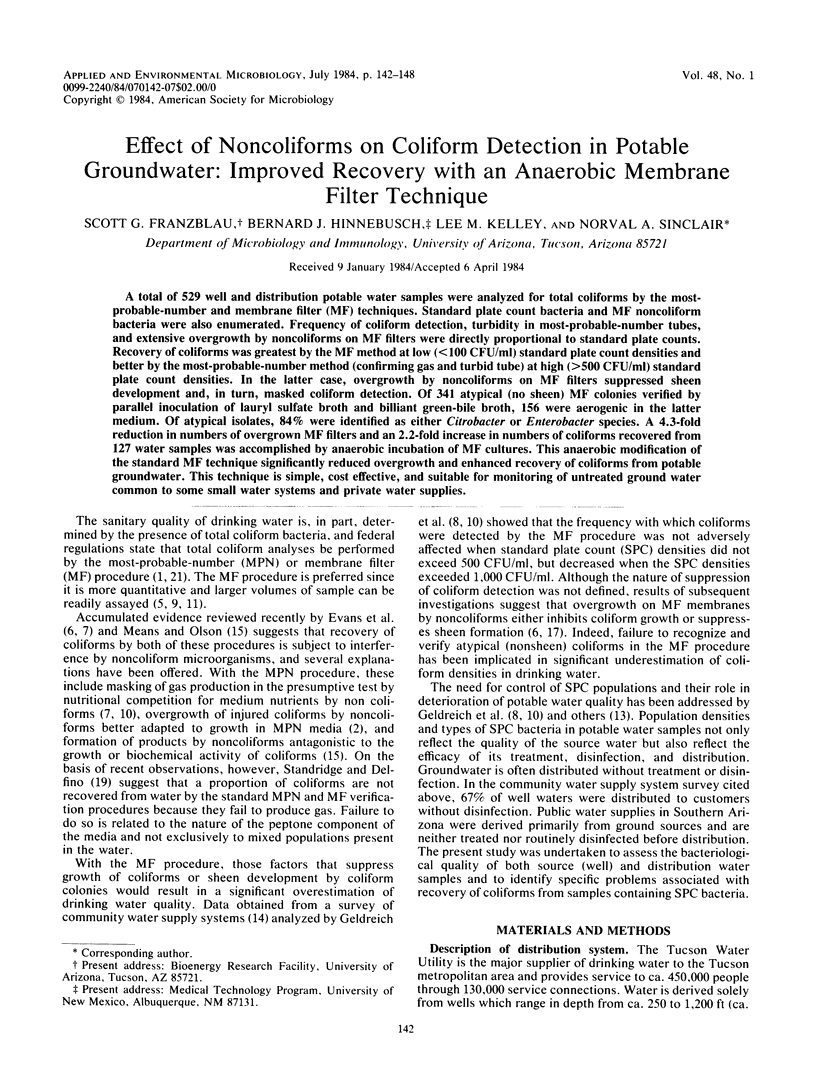
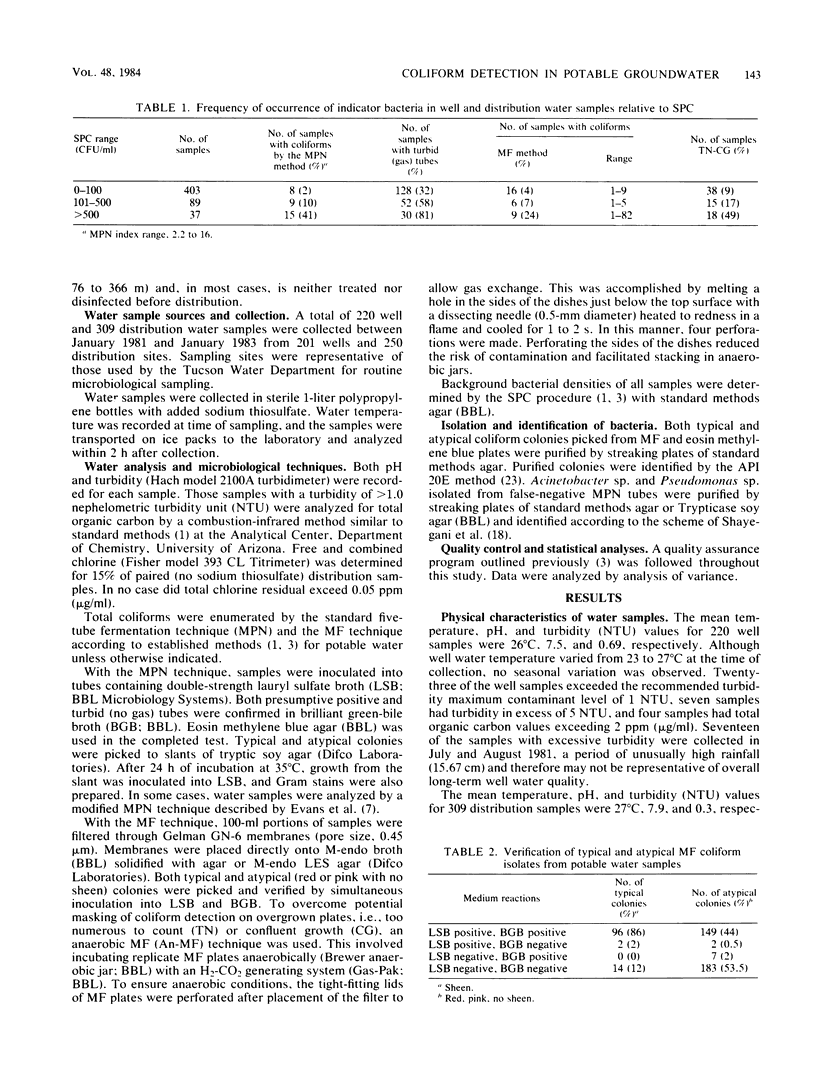
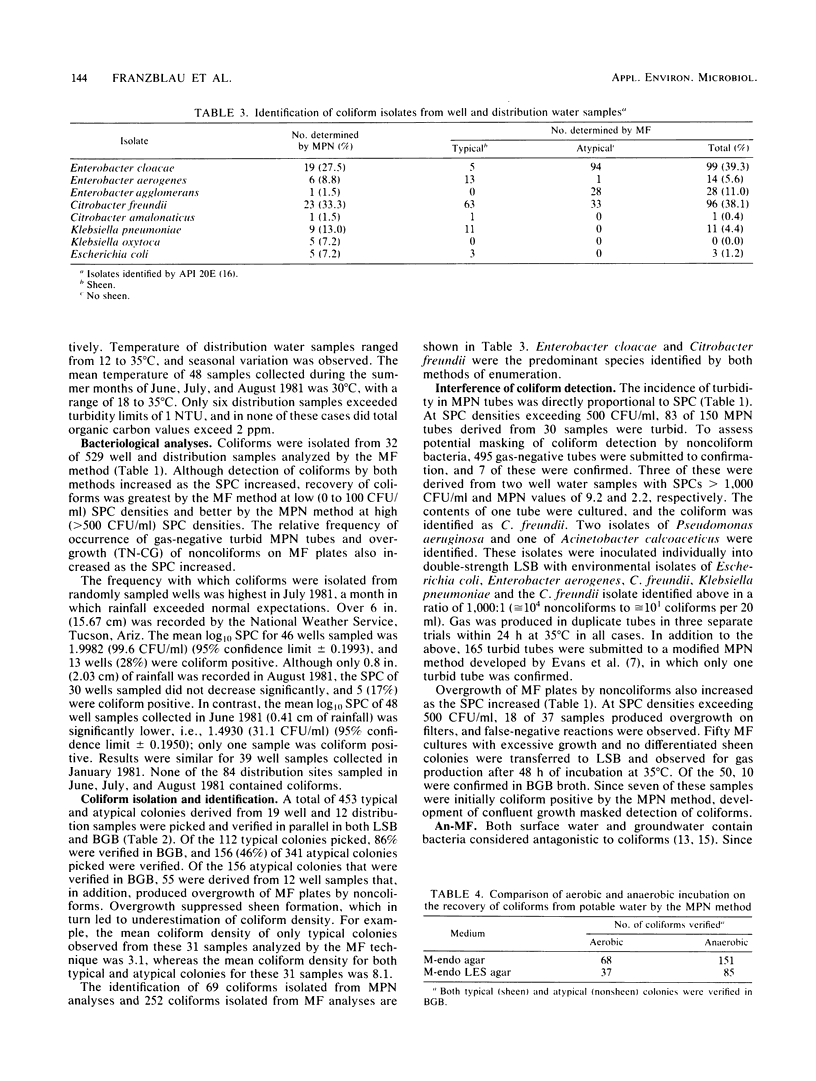
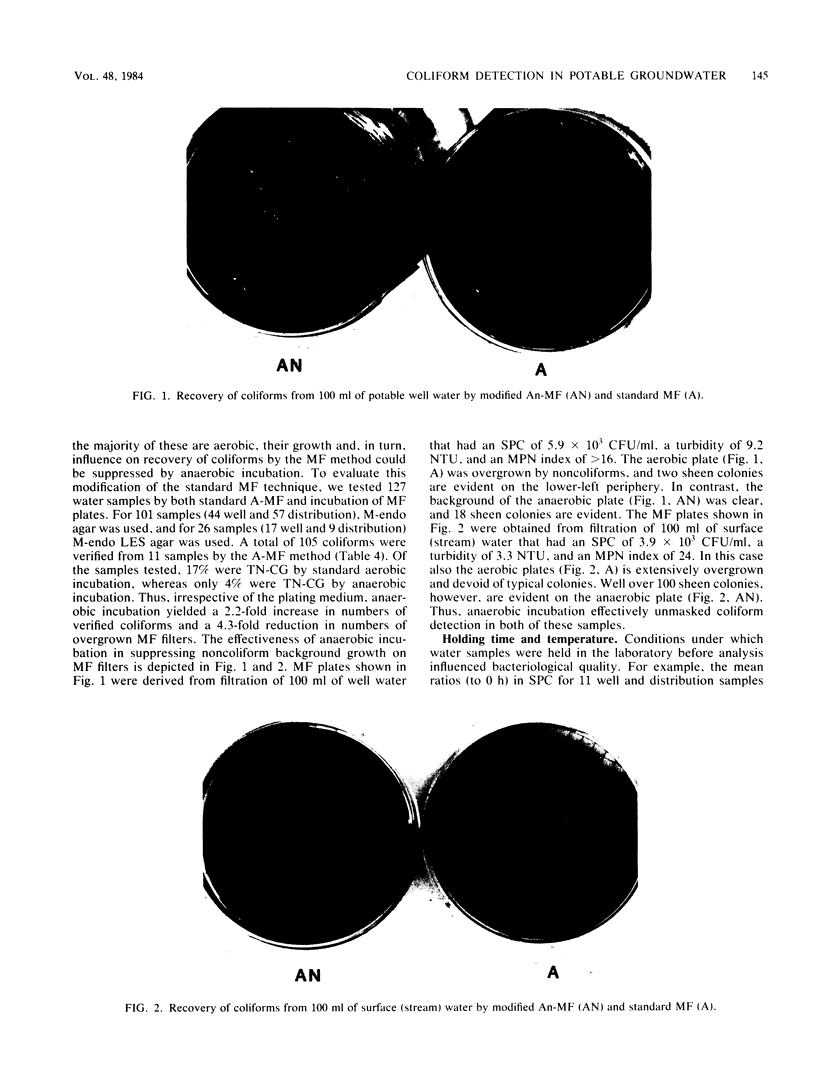
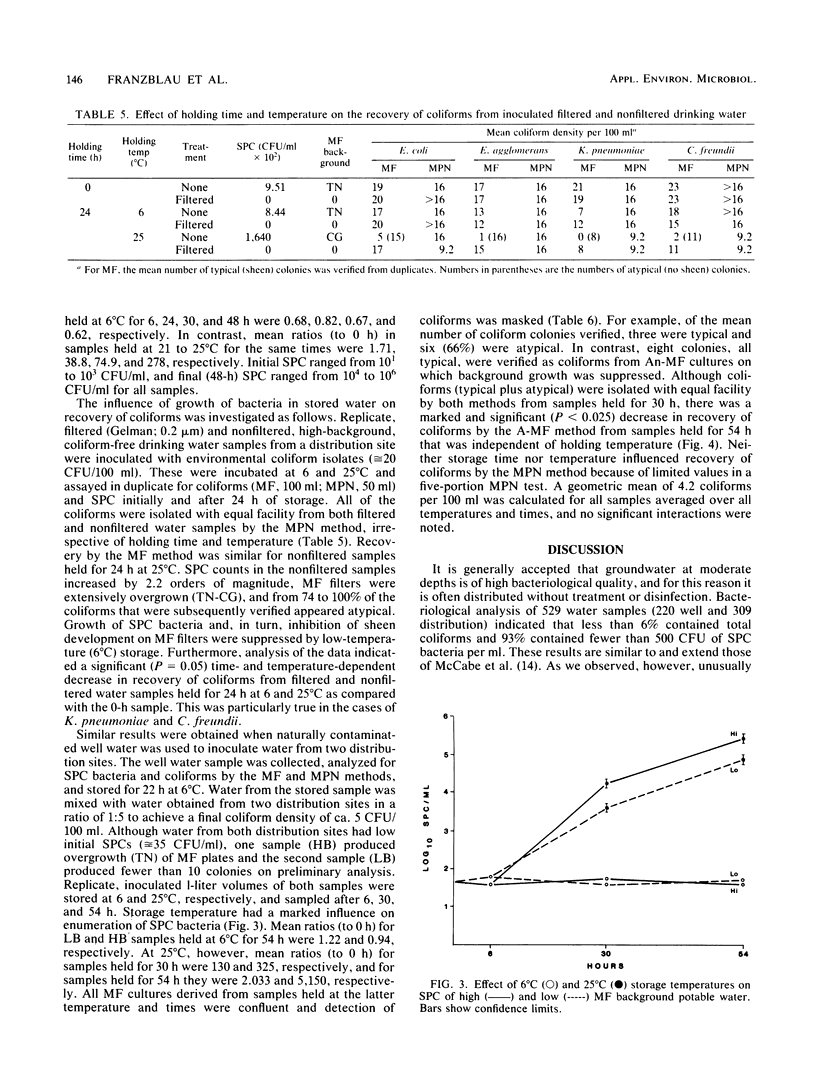

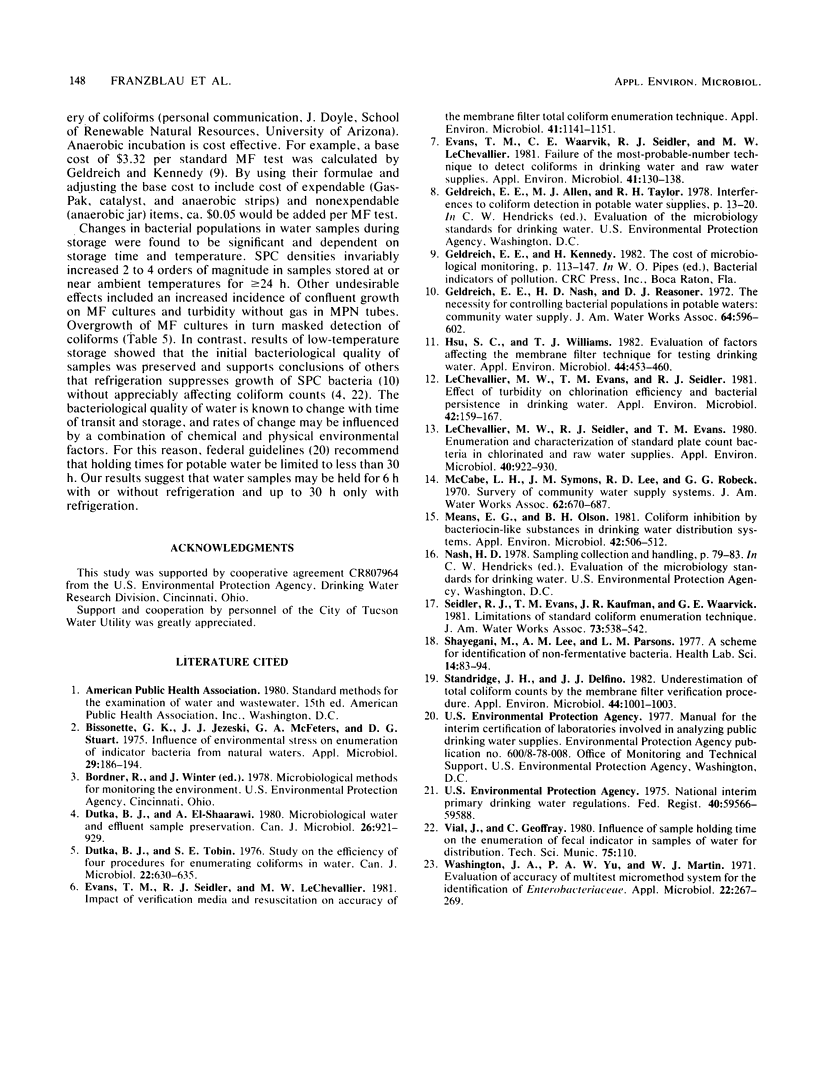
Images in this article
Selected References
These references are in PubMed. This may not be the complete list of references from this article.
- Bissonnette G. K., Jezeski J. J., McFeters G. A., Stuart D. G. Influence of environmental stress on enumeration of indicator bacteria from natural waters. Appl Microbiol. 1975 Feb;29(2):186–194. doi: 10.1128/am.29.2.186-194.1975. [DOI] [PMC free article] [PubMed] [Google Scholar]
- Dutka B. J., El-Shaarawi A. Microbiological water and effluent sample preservation. Can J Microbiol. 1980 Aug;26(8):921–929. doi: 10.1139/m80-159. [DOI] [PubMed] [Google Scholar]
- Dutkaand B. J., Tobin S. E. Study on the efficiency of four procedures for enumerating coliforms in water. Can J Microbiol. 1976 May;22(5):630–635. doi: 10.1139/m76-093. [DOI] [PubMed] [Google Scholar]
- Evans T. M., Seidler R. J., LeChevallier M. W. Impact of verification media and resuscitation on accuracy of the membrane filter total coliform enumeration technique. Appl Environ Microbiol. 1981 May;41(5):1144–1151. doi: 10.1128/aem.41.5.1144-1151.1981. [DOI] [PMC free article] [PubMed] [Google Scholar]
- Evans T. M., Waarvick C. E., Seidler R. J., LeChevallier M. W. Failure of the most-probable-number technique to detect coliforms in drinking water and raw water supplies. Appl Environ Microbiol. 1981 Jan;41(1):130–138. doi: 10.1128/aem.41.1.130-138.1981. [DOI] [PMC free article] [PubMed] [Google Scholar]
- Hsu S. C., Williams T. J. Evaluation of factors affecting the membrane filter technique for testing drinking water. Appl Environ Microbiol. 1982 Aug;44(2):453–460. doi: 10.1128/aem.44.2.453-460.1982. [DOI] [PMC free article] [PubMed] [Google Scholar]
- LeChevallier M. W., Evans T. M., Seidler R. J. Effect of turbidity on chlorination efficiency and bacterial persistence in drinking water. Appl Environ Microbiol. 1981 Jul;42(1):159–167. doi: 10.1128/aem.42.1.159-167.1981. [DOI] [PMC free article] [PubMed] [Google Scholar]
- LeChevallier M. W., Seidler R. J., Evans T. M. Enumeration and characterization of standard plate count bacteria in chlorinated and raw water supplies. Appl Environ Microbiol. 1980 Nov;40(5):922–930. doi: 10.1128/aem.40.5.922-930.1980. [DOI] [PMC free article] [PubMed] [Google Scholar]
- Means E. G., Olson B. H. Coliform inhibition by bacteriocin-like substances in drinking water distribution systems. Appl Environ Microbiol. 1981 Sep;42(3):506–512. doi: 10.1128/aem.42.3.506-512.1981. [DOI] [PMC free article] [PubMed] [Google Scholar]
- Shayegani M., Lee A. M., Parsons L. M. A scheme for identification of nonfermentative gram-negative bacteria. Health Lab Sci. 1977 Apr;14(2):83–94. [PubMed] [Google Scholar]
- Standridge J. H., Delfino J. J. Underestimation of total-coliform counts by the membrane filter verification procedure. Appl Environ Microbiol. 1982 Oct;44(4):1001–1003. doi: 10.1128/aem.44.4.1001-1003.1982. [DOI] [PMC free article] [PubMed] [Google Scholar]
- Washington J. A., 2nd, Yu P. K., Martin W. J. Evaluation of accuracy of multitest micromethod system for identification of Enterobacteriaceae. Appl Microbiol. 1971 Sep;22(3):267–269. doi: 10.1128/am.22.3.267-269.1971. [DOI] [PMC free article] [PubMed] [Google Scholar]




